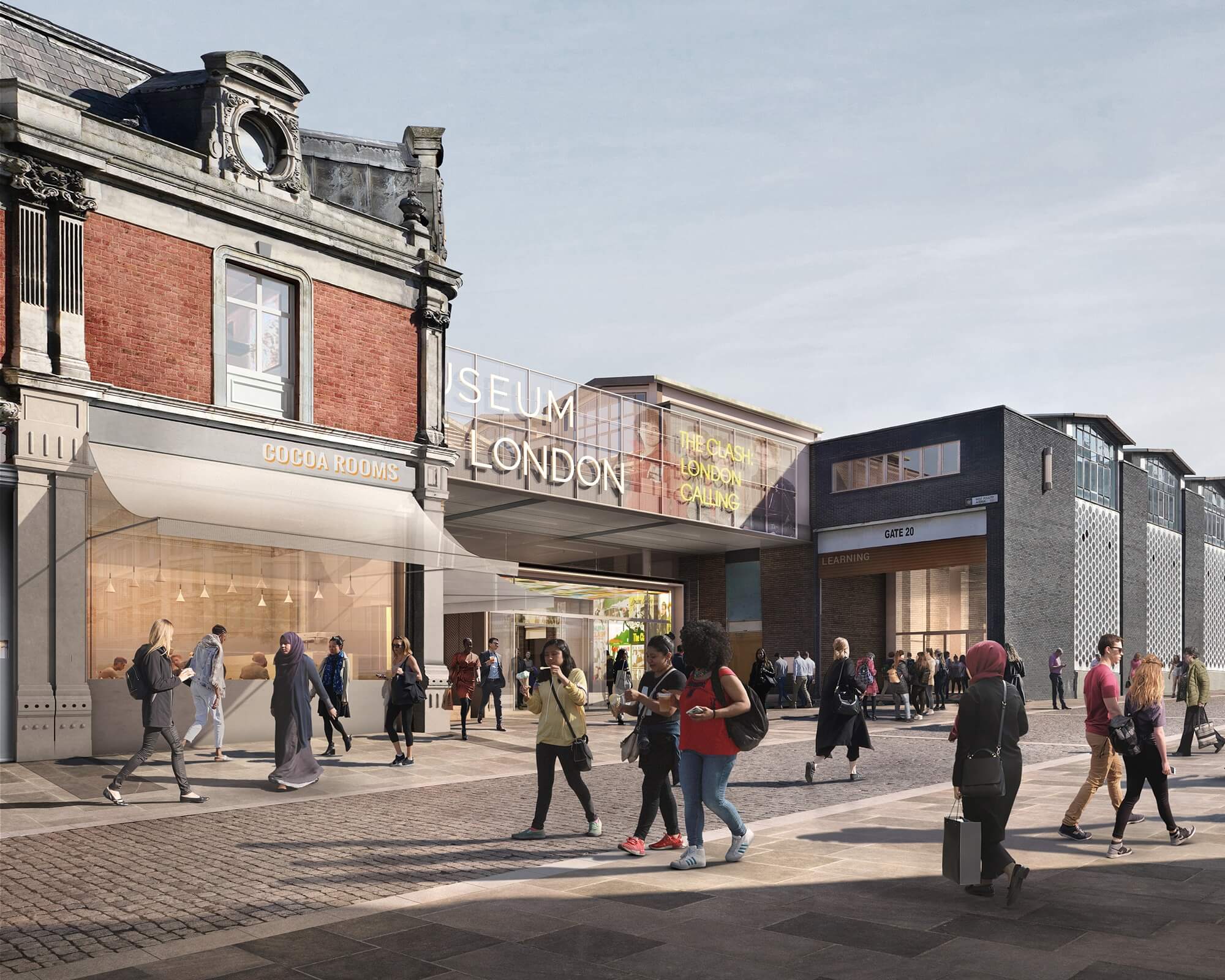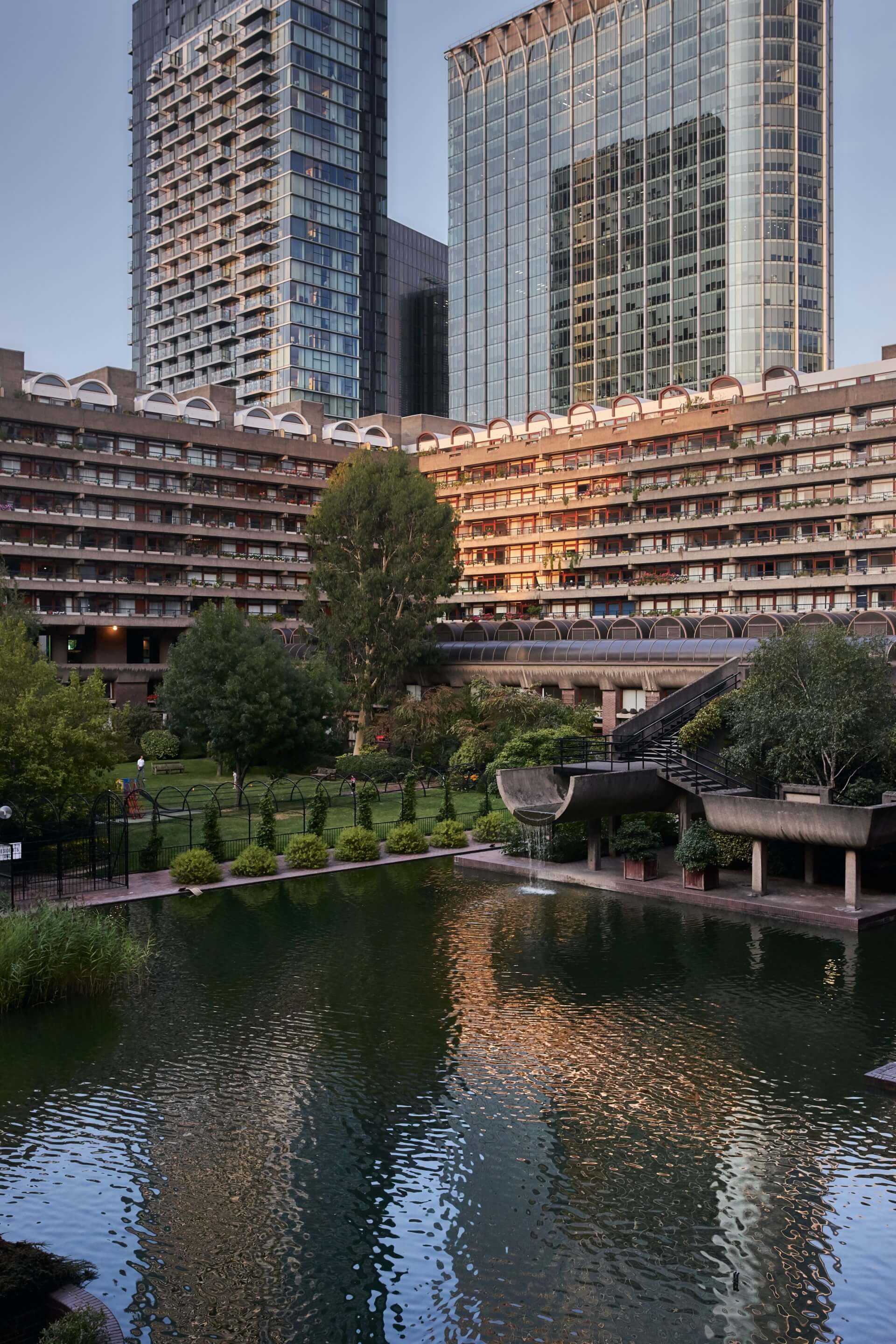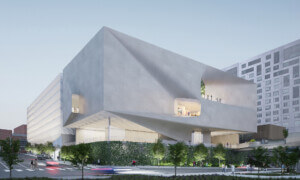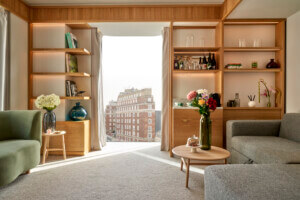The decision to axe plans for Diller Scofidio + Renfro’s Centre for Music in London may be bad news for Simon Rattle and his (former) London Symphony Orchestra (LSO)—but maybe it’s a blessing in disguise.
DS+R’s pyramidal project began life in 2017 after the New York practice fended off proposals from Amanda Levete, Renzo Piano, Norman Foster, and Frank Gehry in a competition. The firm’s winning entry saw 14 stories spiral into the sky in response to Rattle’s brief for a world-class concert hall. Meanwhile, the project’s funders were determined not to let costs spiral out of control like Hamburg’s Elbphilharmonie concert hall, which ended up costing ten times more than expected. The Centre for Music was set to cost $400 million with only $10 million coming from the City of London and the majority coming from private funders. However, the costliest expense wouldn’t have been a financial one.
If realized, the new concert hall meant that the existing Museum of London would have to be taken down. The museum, which opened in 1976 as part of the Barbican Estate, was designed by Philip Powell and Hidalgo Moya. It is far from being a bad building and even further from being so terrible that it deserves to be demolished. The fact that no effort was made to retain it by any of the competition submissions speaks volumes of both the architecture and art industries’ antipathy for the environment, regardless of how many declarations they sign.

This isn’t to say that Powell and Moya’s building is perfect. It was conceived at a time when we were convinced pedestrians would be walking along pathways in the sky—known as ‘pedways’—to transfer between buildings. As a result, getting into the museum is tricky and its relationship to the rest of the city is hampered. Nevertheless, this is an interesting urban insight into the past and a constraint that could have offered opportunity to any architect wanting to solve this problem.
Furthermore, the museum had received a $28 million refurb in 2010 courtesy of London-based WilkinsonEyre, who inserted four new galleries. Clearly, some people saw potential in the building then. However, just nine years later, it was deemed worthy not of saving when, in 2019, it was handed a Certificate of Immunity from Listing, preventing the building from being listed (the U.S. equivalent of landmarking) and paving the way for its removal. One wonders how such a drastic change of opinion happened so soon after such heavy investment.
The key issue though is that a lot of energy has gone into not just building the Museum of London but also recently improving it. What a waste it would be to destroy so much embedded energy and carbon, and what message does that send to future architects currently being taught that the climate crisis rests in their hands?
Nevertheless, the museum is still moving. Plans for its new home in Smithfield Market at the hands of Stanton Williams are still in motion and this in fact is a good idea. Indeed, the market has a rich history and is a palimpsest of different eras dating back to the Victorian age, making it an apt setting for showcasing the history of the city which it inhabits. Here is a great example of making use of existing urban fabric—an example right on the doorstep of the City of London Corporation and the Barbican Centre.
But, back to the Centre for Music and why it was being built in the first place. Rattle argued that the current LSO venue, a concert hall in the Barbican Centre, could not even fit a fifth of its orchestral repertoire. “In my wishlist of pieces there is so much which simply would not work there,” said Rattle, commenting on the Barbican venue in 2017. “The stage was beautifully designed for a certain size orchestra. It was not designed for a very large orchestra and it was certainly not made with a chorus in mind.”

There are world-class venues outside London, it should be noted: Birmingham, Manchester, Gateshead, Cardiff, and Glasgow all being on offer. ‘But this is the LONDON Symphony Orchestra,’ I hear you cry. It would be no bad thing if the LSO relocated—the Birmingham Royal Ballet, set up in 1946, is a good example success story of such a move.
Meanwhile, other leading figures involved with the Centre for Music, such as Andrew Parmley, who formerly led the City of London Corporation, were instead looking for an icon. “Visually striking, acoustically perfect and open to all, a new center for music—facing St Paul’s Cathedral, Millennium Bridge and Tate Modern—would be an important investment in the strength of the Square Mile and our neighbouring communities,” he said.
In the wake of losing both a potential icon and concert hall, the original concert hall in the Barbican is now being eyed for refurbishment, with potential investment being rumored at north of $140 million and the first phase of completion penned for 2022, the Barb’s 40th anniversary.
Managing Director of the Barbican Centre, Sir Nicholas Kenyon, has changed his tune, saying in a press release that the move is now “in line” with the venue’s outlook on “sustainability, climate action, and the ever-changing needs of audiences, communities, and our many performers, including our superb resident orchestra, the LSO.”
This is good news. If the rumored fees are true, that’s a major change for the Barbican, particularly in a post-pandemic, post-Brexit era where cuts to arts funding seem to be the central government’s favorite pastime.











